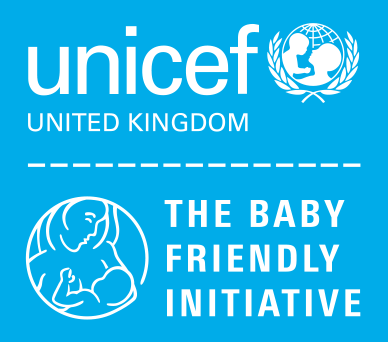Breastfeeding has been found to generally reduce a child’s current and future risk of overweight and obesity. Some of the latest studies are below. Find out about the impact of breastfeeding on maternal overweight and obesity in our maternal health research section.
Systematic review and meta-analysis of breastfeeding and later overweight or obesity expands on previous study for World Health Organization
This review provided an update to a systematic review and meta-analysis of the association of breastfeeding with overweight or obesity that had been commissioned by the World Health Organization. A total of 159 studies were assessed, with findings concluding that breastfeeding reduced the odds of overweight or obesity, and that this association was unlikely to be due to publication bias and residual confounding.
A new report from First Steps Nutrition Trust identifies key actions needed to protect children from overweight and obesity in the first 1,000 days of life, including requiring services to become Baby Friendly accredited. The report outlines 18 key actions needed to promote a healthy weight in the early years, including increasing investment in universal breastfeeding support, regulating the misleading commercial influence of food and drinks for infants and young children, and offering greater support for families to practise age-appropriate introduction of solids and responsive feeding.
Read more on this report here.
Infant feeding and growth trajectories in early childhood: the application and comparison of two longitudinal modelling approaches
Two longitudinal approaches revealed similar findings that infant feeding mode (breastfeeding, mixed feeding, formula feeding) and breastfeeding duration, but not the timing of solid foods introduction, were associated with BMI z-score trajectory in early childhood. The findings provide robust longitudinal evidence to encourage and support extended breastfeeding for childhood obesity prevention.
Barriers and enablers to caregivers’ responsive feeding behaviour: A systematic review to inform childhood obesity prevention
Responsive infant feeding is a critical component of childhood obesity prevention. This review identifies the barriers and enablers to caregiver responsive feeding. Findings indicated that parents’ recognition of a child’s feeding and safety cues are key to the development of responsive feeding, and that caregivers and infants learning to signal to each other is highly important. Therefore, the provision of timely information and education to support caregivers is critical.
Longer term breastfeeding and later introduction of solids associated with lower BMI in children up to five years of age
This Australian study examined the relative impact of breastfeeding duration and timing of solids introduction on BMI score in early childhood. Results demonstrated that children who were breastfed for ≥ 6 versus < 6 months had a lower BMI at all ages from three to 60 months and children who received solids before versus after six months of age had a higher BMI at 18 and 42 months.
Association between Characteristics at Birth, Breastfeeding and Obesity in 22 Countries: The WHO European Childhood Obesity Surveillance Initiative – COSI 2015/2017
This study of 16 countries across Europe has found that breastfeeding can cut the chances of a child becoming obese by up to 25%. In absolute terms, 16.8% of children who were never breastfed were obese, compared with 13.2% who had been breastfed at some time and 9.3% of children breastfed for six months or more. After adjustment for demographics, children who were never breastfed were 22% more likely to be obese and those who had been breastfed for less than six months were 12% more likely to be obese than children who were breastfed for six months. The protection for children who were exclusively breastfed for six months – with no formula or weaning foods involved – was even higher, at 25%. The data came from nearly 30,000 children monitored as part of the WHO Childhood Obesity Surveillance initiative (Cosi).
Find out more about the study.
Effects of infant feeding on growth and childhood obesity
This evidence review explores the impact of interventions designed to prevent childhood obesity. The review highlights the importance of early years interventions for obesity prevention, and considers the importance of supporting a responsive feeding approach in order to prevent rapid weight gain.
https://www.cedar.iph.cam.ac.uk/resources/evidence/eb-17-infant-feeding-growth-obesity/
Effects of opaque, weighted bottles on maternal sensitivity and infant intake
This study explored whether use of opaque, weighted bottles (as compared with conventional, clear bottles) improves feeding outcomes by supporting responsive bottle feeding and reducing over feeding. The researchers found that when using the opaque bottles, mothers exhibited significantly greater sensitivity during feeding, fed their infants fewer millilitres per kilogram body weight, and fed their infants at a significantly slower rate. They note that infant clarity of cues was a significant moderator of effects of bottle type on intake per kilogram body weight, and that effects of bottle type were not moderated by bottle contents (expressed breast milk vs. formula). They concluded that promotion of opaque, weighted bottles for infant feeding may be a pragmatic approach to improve the quality and outcome of bottle‐feeding interactions.
Infant feeding and weight gain: Separating breast milk from breastfeeding and formula from food
This study explored the link between feeding method and weight, using feeding reports from mothers and hospital documents, and measuring weight and BMIz scores at 12 months. Compared with exclusive direct breastfeeding at 3 months, all other feeding styles were associated with higher BMIzs. Formula supplementation by 6 months was associated with higher BMIzs, whereas supplementation with solid foods was not. Results were similar for weight gain velocity. The authors concluded that breastfeeding is inversely associated with weight gain velocity and BMI. These associations are dose dependent, partially diminished when breast milk is fed from a bottle, and substantially weakened by formula supplementation after the neonatal period.
Effect of a responsive parenting educational intervention on childhood weight outcomes at 3 years of age
This study examined effects of a responsive parenting intervention designed to promote developmentally appropriate, prompt, and contingent responses to a child’s needs on weight outcomes at 3 years. Researchers found that, among primiparous mother-child dyads, a responsive parenting intervention initiated in early infancy compared with a control intervention resulted in a modest reduction in BMIz scores at age 3 years, but no significant difference in BMI percentile. Further research is needed to determine the long-term effect of the intervention and assess its efficacy in other settings.
Early infant feeding of formula or solid foods and risk of childhood overweight or obesity in a socioeconomically disadvantaged region of Australia: A longitudinal cohort analysis
This Australian study of 346 singleton, full term and normal weight infants measured the outcome risk of overweight or obesity at every two-year interval of children aged 0 or 1 year at baseline until they reached age 10 or 11, defined by body mass index (BMI) ≥ 85th percentile. Researchers found that the odds of overweight or obesity were significantly higher among infants introduced to formula or solids at ≤4 months compared to those introduced at >4 months. The odds of overweight or obesity when age at formula or solids introduction was held fixed at ≤4 months, increased significantly for children stopping breastfeeding at age ≤4 months compared to >4 months. The authors concluded that increasing the prevalence of breastfeeding without any formula or solids to 4–6 months in southwest Sydney should be a worthwhile public health measure.
Association of exposure to formula in the hospital and subsequent infant feeding practices with gut microbiota and risk of overweight in the first year of life
This study found that among 1,087 infants from the Canadian Healthy Infant Longitudinal Development (CHILD) cohort, earlier cessation of breastfeeding and supplementation with formula (more so than complementary foods) were associated with a dose-dependent increase in risk of overweight by age 12 months; this association was partially explained by specific gut microbiota features at 3 to 4 months. Subtle but significant microbiota differences were observed after brief exposure to formula limited to the birth hospital stay, but these differences were not associated with overweight.
Older research
- One in five UK infants are obese at age 14 – but children who were breastfed are less likely to be obese
- Relationship between breastfeeding and early childhood obesity
- The effects of breastfeeding on childhood BMI: a propensity score matching approach
- Effect of Exclusive Breastfeeding Among Overweight and Obese Mothers on Infant Weight-for-Length Percentile at 1 Year
- Systematic review of interventions to reduce early overweight and obesity
- Breastfeeding and obesity
- The association between breastfeeding and childhood obesity
- Breastfeeding duration and weight gain trajectory in infancy



